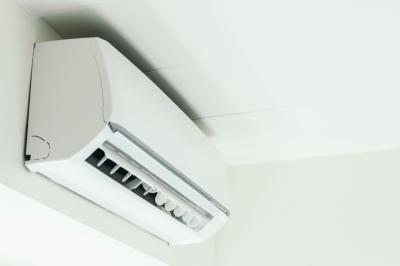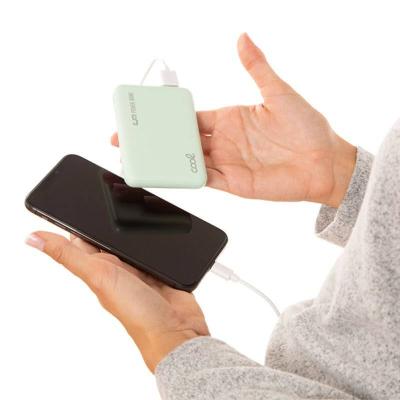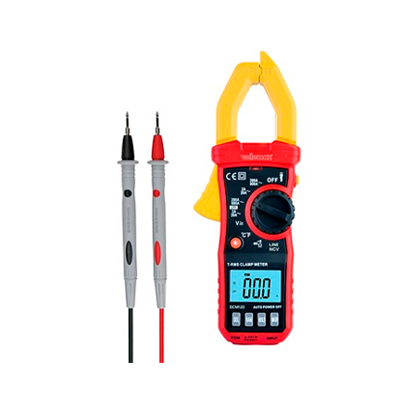
Induction cooktops have brought a true revolution of efficiency, safety, and speed to our kitchens. Today, many no longer consider any other alternative for their kitchen. But how do induction cooktops actually work? And how do they compare to gas or ceramic cooktops? Are they the ideal solution for everyone's preferences? In this article, we will explore the intricacies of induction cooktop operation, their pros and cons, and all the aspects to consider in this choice.
How does the induction system work?
Induction, unlike traditional methods used in cooktops, heats the pot or cooking container directly through an electromagnetic field, eliminating the need for an open flame.
In the photo above, an example of an induction cooktop is shown.
This process involves passing an electric current through a coil, generating a magnetic field that, in turn, induces a current to flow in the metal pot (Eddy current). This current generates heat, which means that the cooking vessel itself heats directly, while the cooktop remains cool, increasing efficiency and safety.
In the photo above, you can see the interior of an induction cooktop. Here, the large copper coil that forms the magnetic field is prominent. There is also a cooling fan and the power supply surrounding the coil. In the center of the coil, there is a temperature sensor covered with white thermal compound.
Induction cooktop, ceramic, or gas?
Typically, the choice of a cooktop comes down to deciding between induction, ceramic, or gas. Let's start with electric cooktops. Although it may be easy to confuse an induction hobs with a vitroceramic hobs, they are two very distinct types of cooktops. As explained earlier, induction cooktops heat the cooking vessels directly without generating heat on the cooktop surface, whereas ceramic cooktops rely on heating an electric resistance beneath a glass surface, which then heats the cookware.
In the photo above, the unmistakable red glow of the heated element in a ceramic cooktop is prominent.
This difference brings three major advantages over ceramic cooktops: first, by reducing heat losses, they offer significantly higher energy efficiency. Second, they provide much greater speed and responsiveness - in other words, an induction cooktop heats up and cools down faster than a ceramic one. Finally, there's the safety aspect - since the induction cooktop remains relatively cool, it reduces the risk of burns.
However, induction comes with a significant drawback compared to ceramic cooktops, as it requires the use of specific cookware compatible with induction, based on ferrous materials.
If we bring gas cooktops into this discussion, several other differences emerge.
Gas cooktops are still the preferred choice for many professional chefs due to their precise and instantly adjustable heat levels. The significant difference is the heating method: an open flame. This traditional method provides excellent temperature control and quick heating times, even when compared to induction cooktops.
However, gas cooktops come with several disadvantages. First, they are less energy-efficient because a significant portion of the flame's heat disperses into the air, wasting energy and heating up the kitchen. Then, there's the crucial safety issue. The use of gas can pose safety risks such as gas leaks or the danger of open flames causing fires. Additionally, they are more challenging to clean (especially when dealing with clogged burners).
So, we can summarize the differences as follows:
| Type of Hobs | Advantages | Disadvantages |
| Induction Hobs |
|
|
| Vitroceramic Hobs |
|
|
| Gas Hobs |
|
|
Finally, don't forget that there is also a 'hybrid' option! Mixed cooktops combine electric cooking zones with gas burners, providing a more flexible cooking experience for those who can't do without either option.
Factors to Consider When Choosing an Induction Cooktop
When choosing an induction cooktop, several factors need to be taken into account, including the initial cost, compatibility of kitchen utensils, selecting the right power and size, analyzing additional features, and planning for installation and ventilation requirements. Let's explore some details.
Cost of the Induction Cooktop
First and foremost, the price of the cooktop itself must be considered. Induction cooktops tend to be more expensive than traditional gas or ceramic cookers due to the advanced technology they use.
However, the cost doesn't end at the initial price. The high energy efficiency of induction cooktops results in lower operating costs over time, helping to reduce the overall investment.
Compatibility of Cookware and Utensils
Induction cooktops require the use of specific cookware with a magnetic base, necessary for the electromagnetic field to heat effectively.
So, it's always a good idea to check if your current collection of pots and pans is compatible. How can you do that? It's easier than it sounds: you can use a magnet. If the magnet sticks to the base, it's a sign that the cookware is compatible. If your kitchen utensils aren't compatible, you'll need to consider the cost of purchasing induction pans and pots.
Power and Size
Another essential consideration in choosing the most suitable induction cooktop is the power and size of the cooktop. Here, it's all about adapting to your preferences. Do you usually cook several things simultaneously, or do you typically cook just one or two dishes? This will influence the number of cooking zones and the ideal cooktop power for you.
It's also crucial not to forget the available physical space on the kitchen counter. Make sure you have enough space for the size of the cooktop you're considering, as well as the necessary electrical installation. Some models may require more power, which might entail potential electrical circuit improvements in the kitchen.
Additional Features
As one of the most innovative kitchen options, induction cooktops can offer a range of important features, depending on your usage.
These days, it's common to find induction cooktops with touch controls, child safety locks, and the ability to combine two cooking zones into one.
More advanced models may include extra features like connectivity to smart devices (smart home) or even integrated exhaust hoods (as highlighted in the photo below). While these features can provide added convenience, they typically come with a higher price tag.
Induction: Yes or No?
Considering all the factors, it's hard not to look at induction cooktops as an excellent choice.
Induction technology offers a range of benefits, primarily in terms of efficiency and safety, bringing some of the advantages of traditional gas cooktops and combining them with the convenience of electric cooktops.
It's also true that induction cooktops typically require a higher initial investment and potentially the purchase of new pans and pots. So, it's best to explore the various options in our online store and weigh all the pros and cons to make an informed decision.
Finally, don't forget that we are always ready to help you make the ideal choice! Visit one of our physical stores in Porto or Braga to explore our complete range of induction cooktops.









Comments